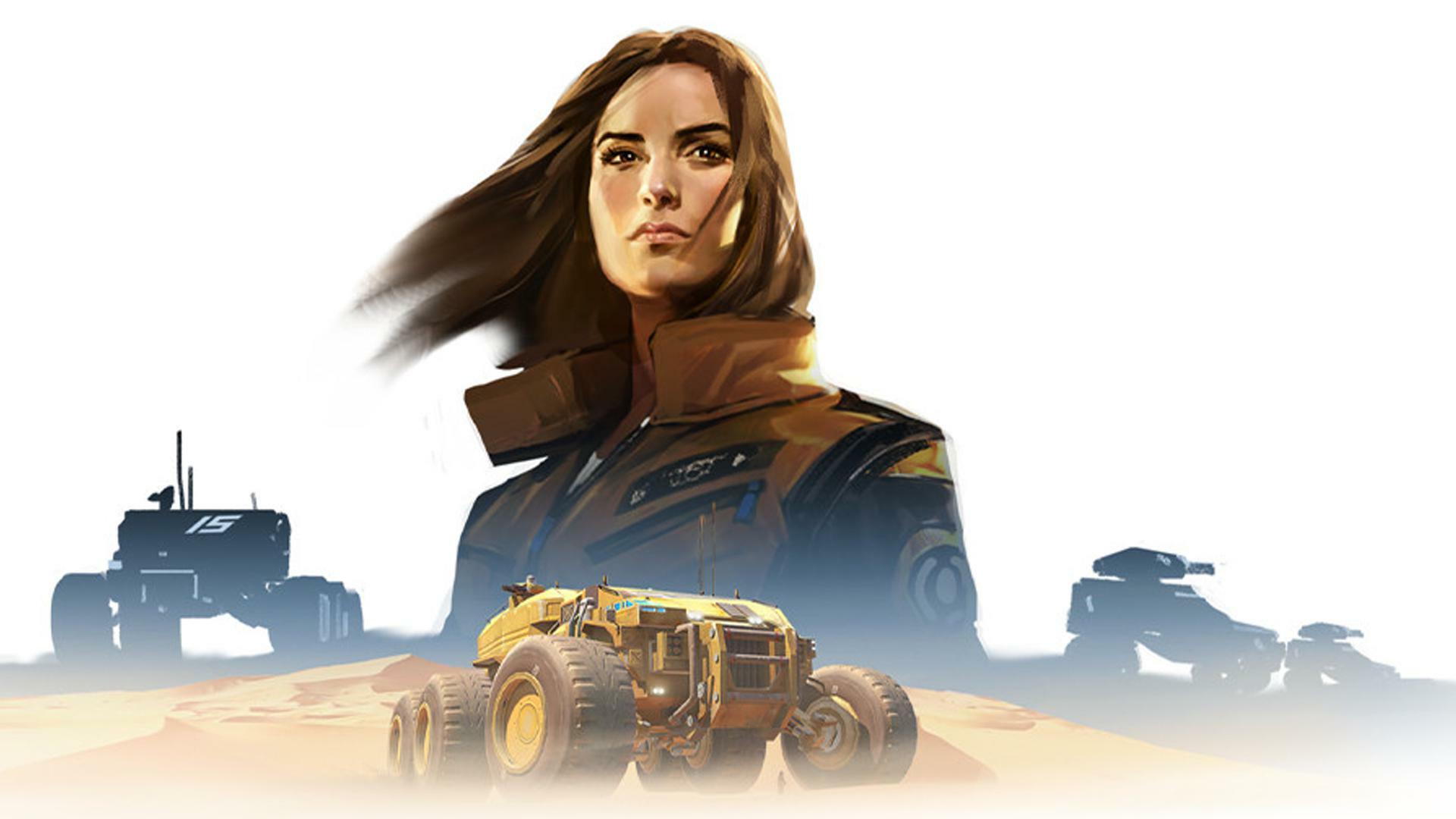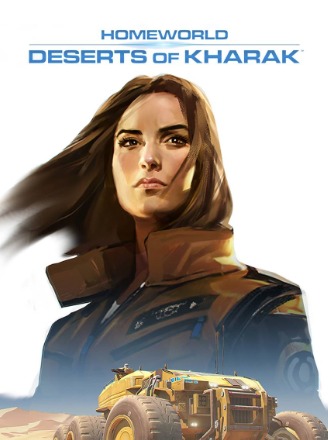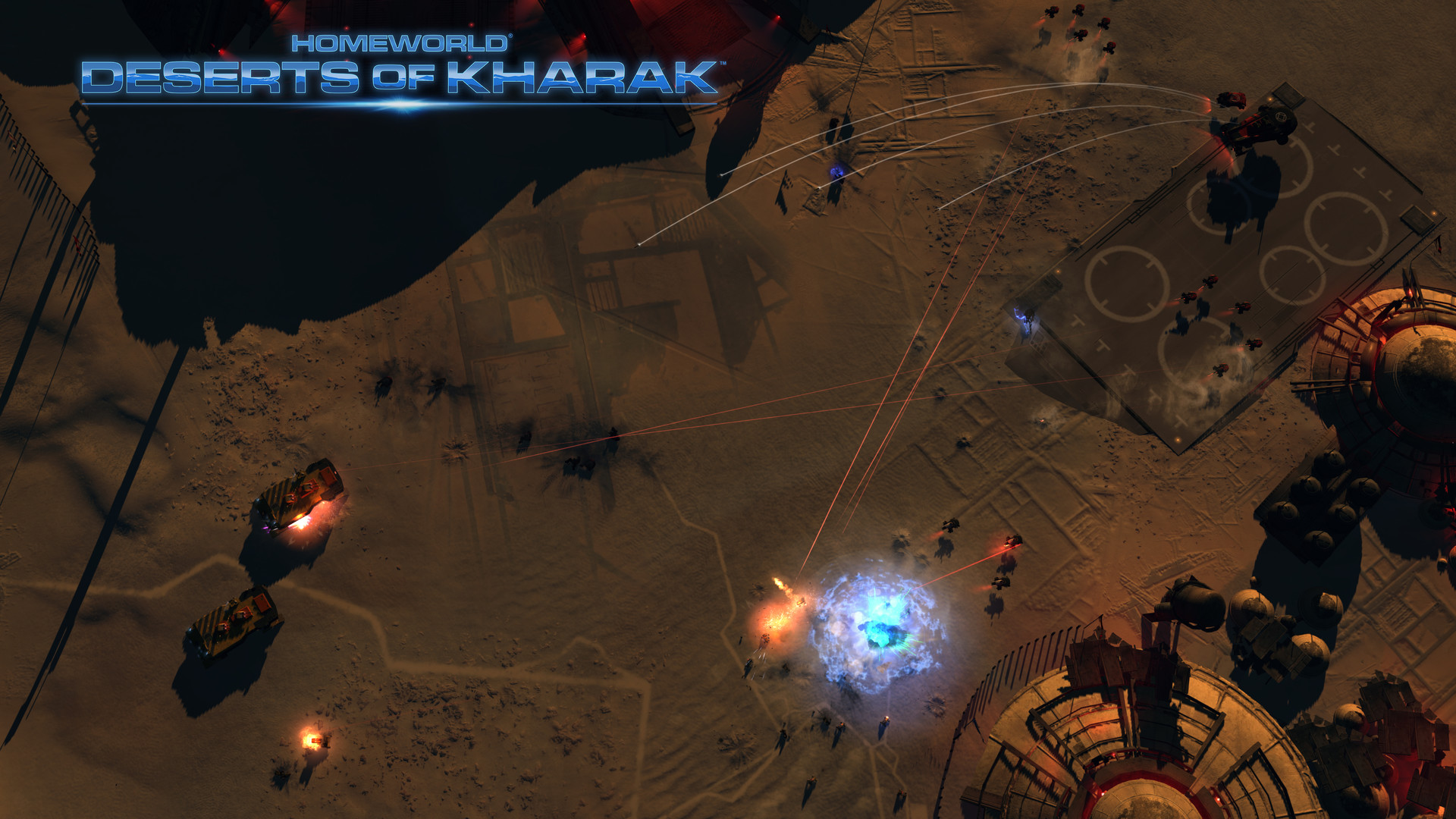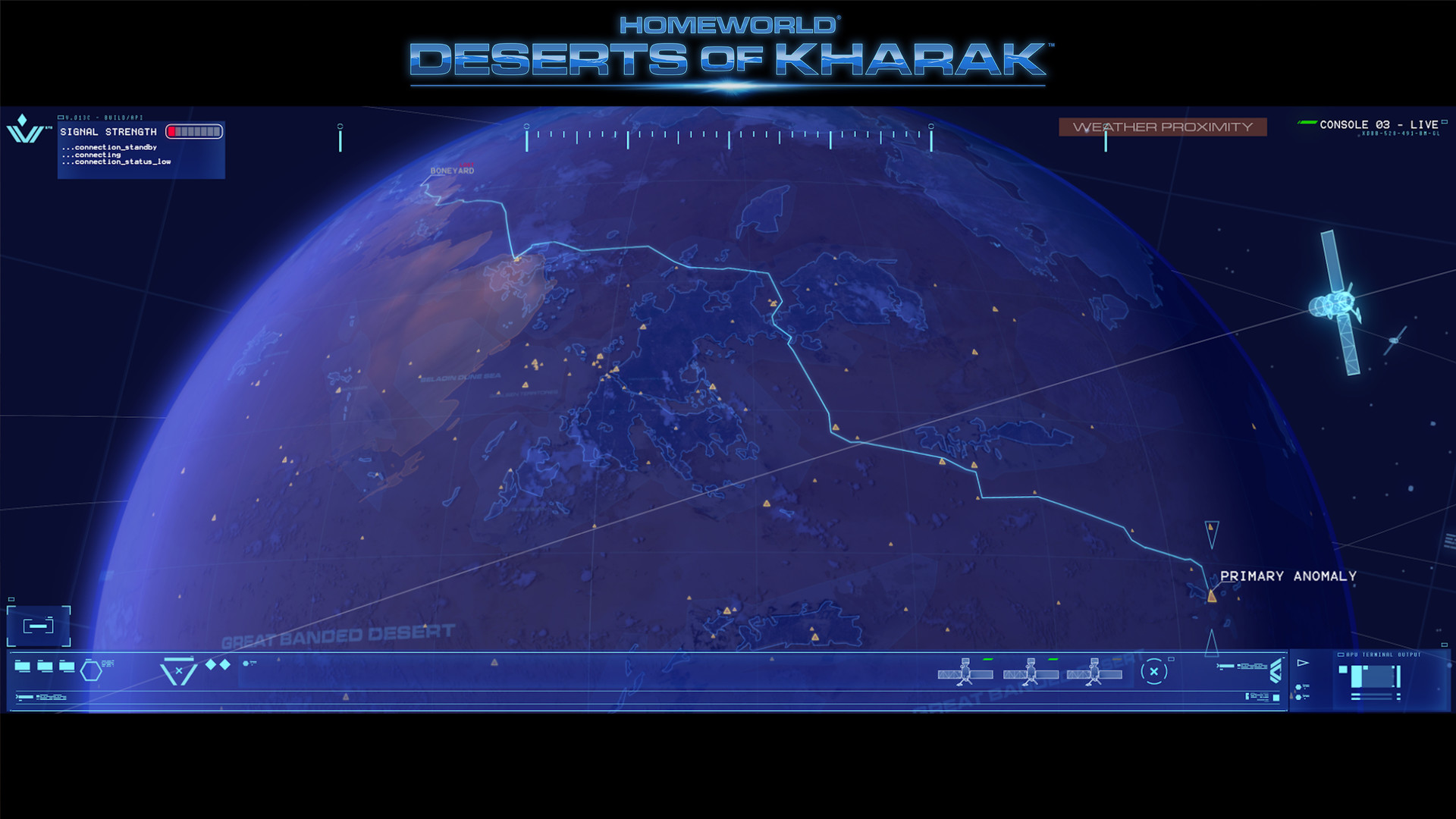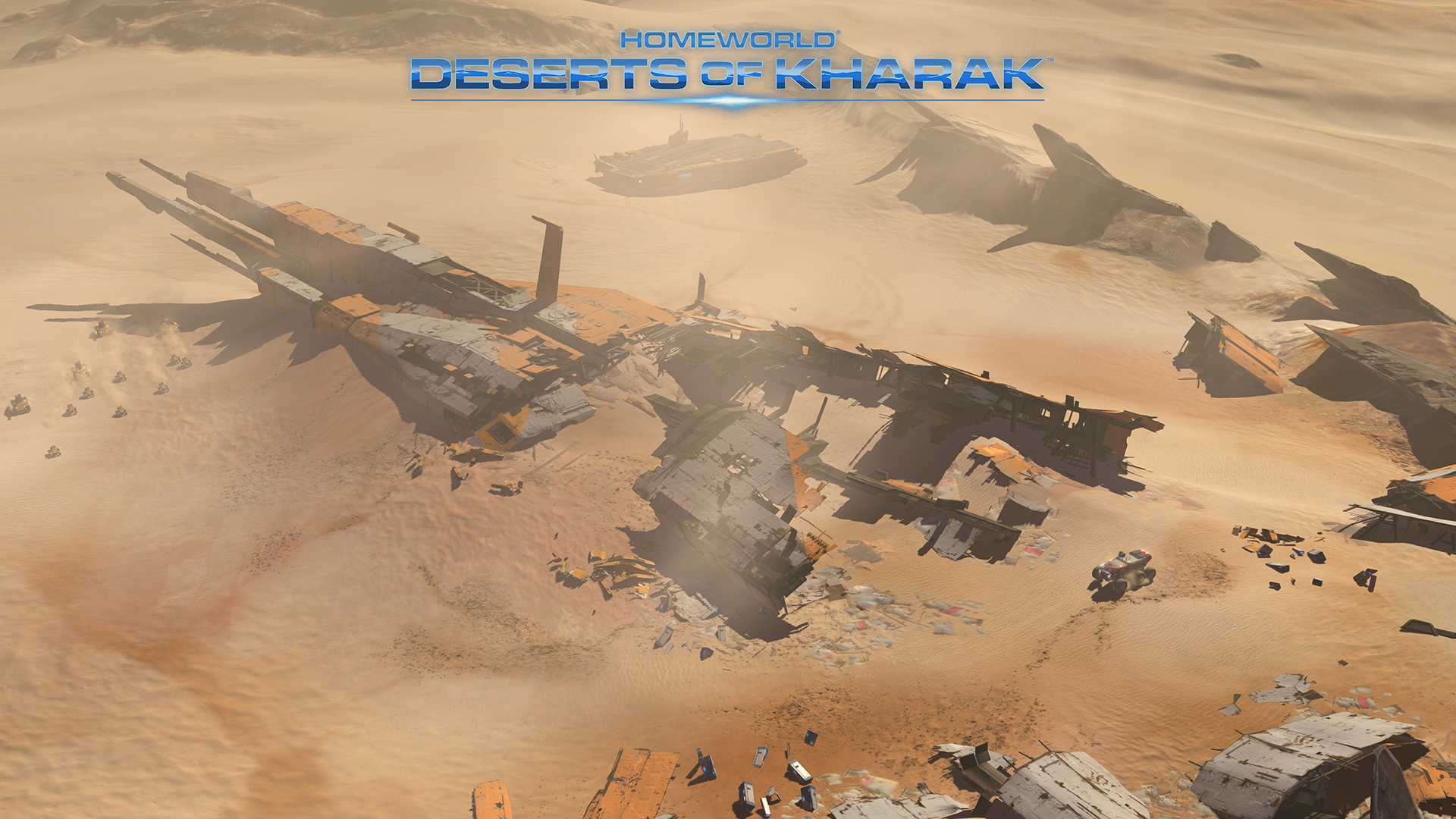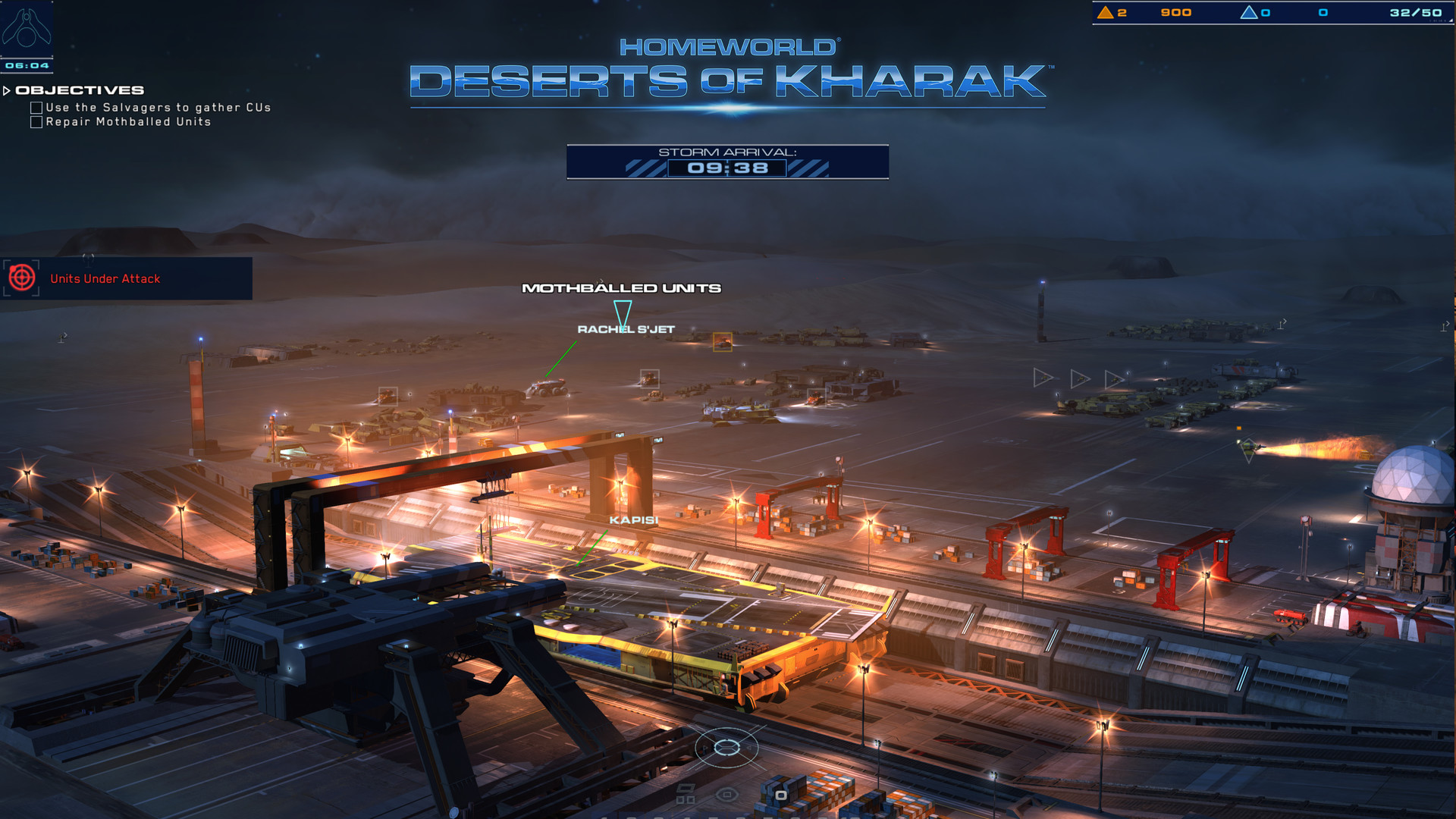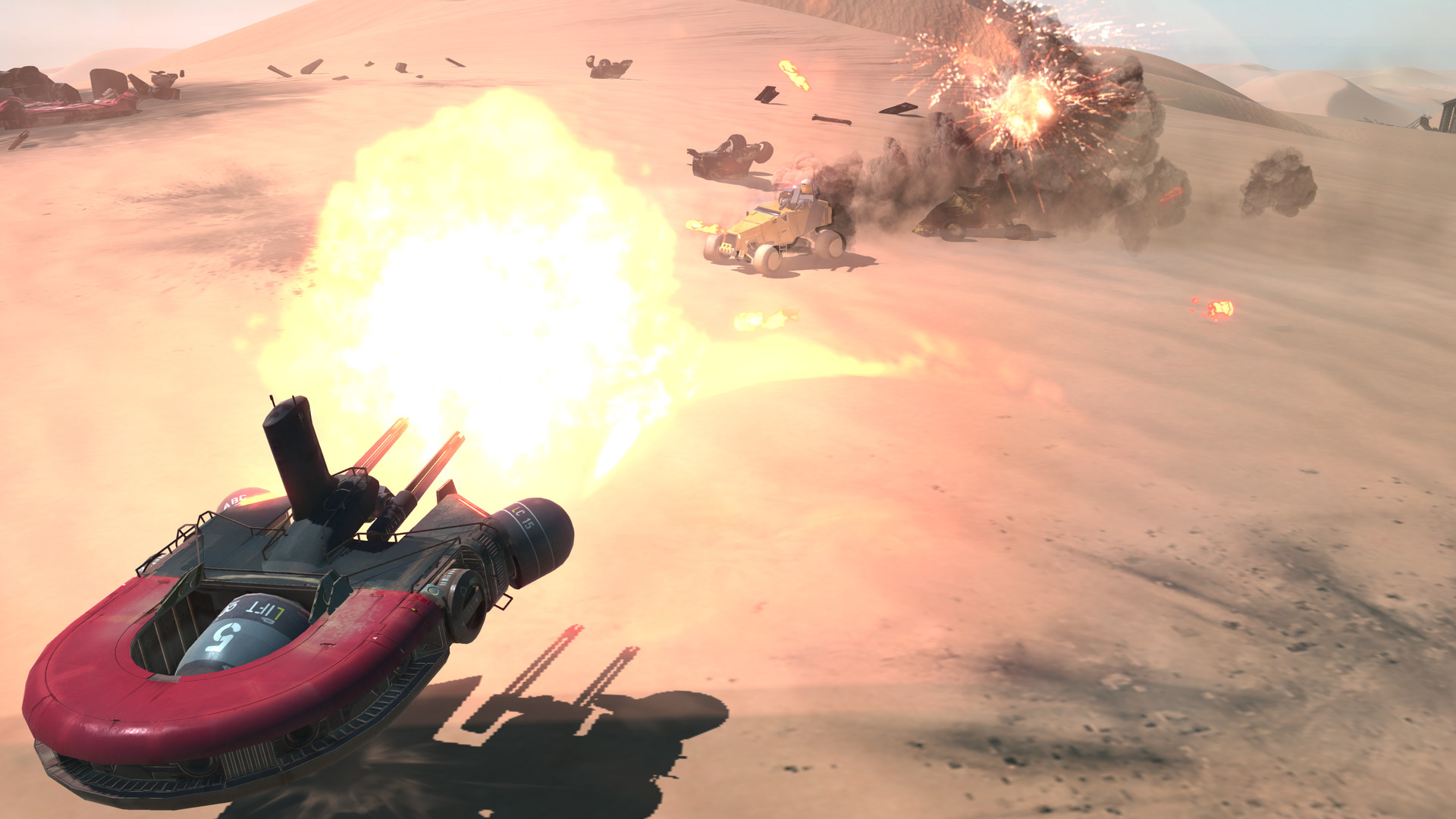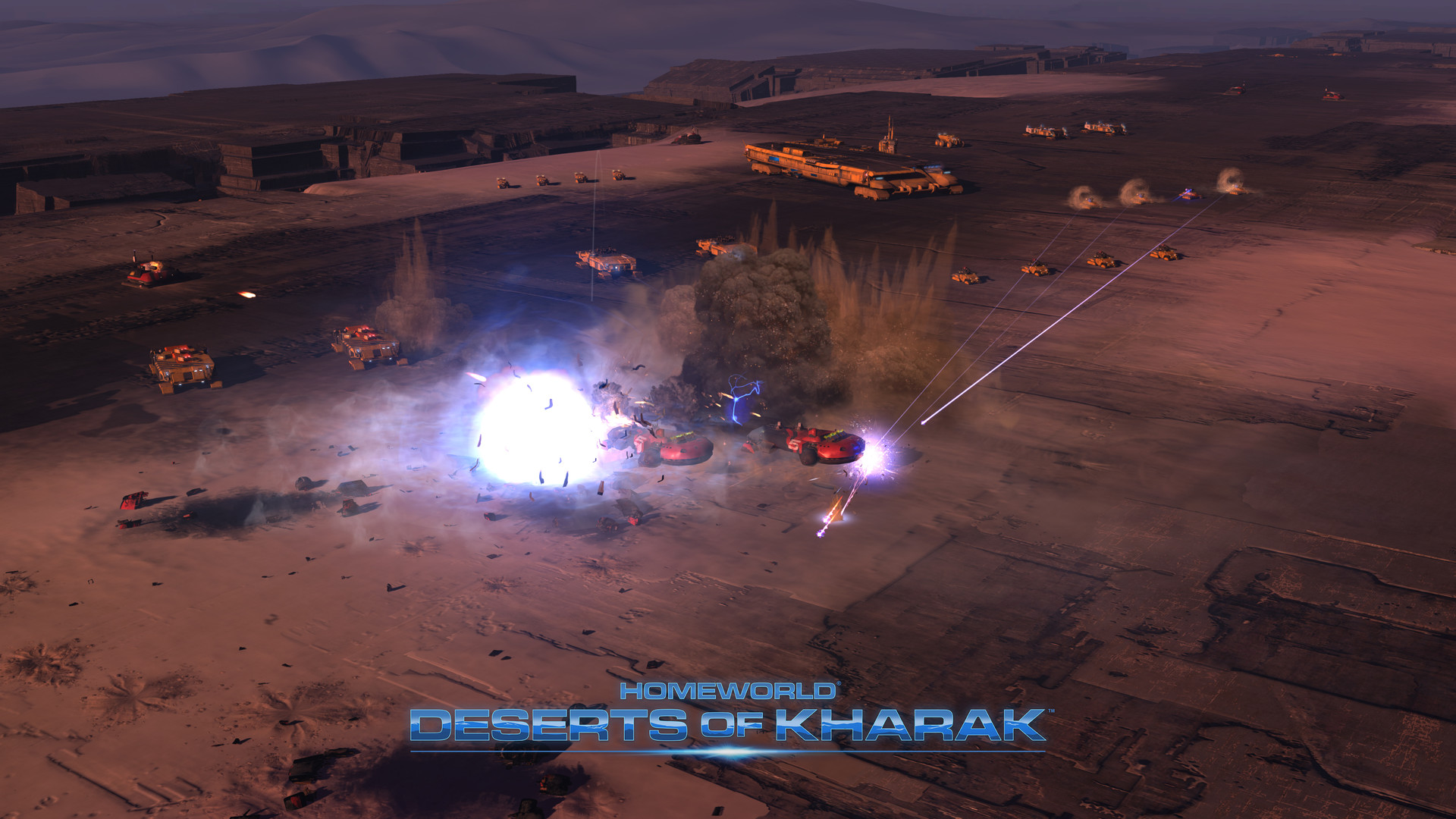Homeworld: Deserts of Kharak transports players to the harsh sands of Kharak in a story-driven journey filled with strategy and survival. As a prequel to the highly acclaimed Homeworld series, this game dives into the origins of the Kushan people and their desperate battle to discover hidden secrets beneath the dunes. Developed by Blackbird Interactive, Deserts of Kharak expertly blends crafting a compelling narrative with intense real-time strategy gameplay, immersing players in its rich and hostile desert landscape.
In this review, we will dissect the various elements that make this title a standout in the realm of RTS games. From its well-crafted story and robust tactical mechanics to the visually stunning graphics and sound design, Homeworld: Deserts of Kharak is a must-experience for fans and newcomers alike. We’ll delve into the pros and cons, take a look at the system requirements, and provide an overall rating to help you assess whether this title deserves a spot in your gaming collection.
Prices for Homeworld: Deserts of Kharak
Unfolding the Saga: The Plot of Deserts of Kharak
Set on the arid world of Kharak, Homeworld: Deserts of Kharak recounts the epic journey of the Kushan people before their exodus to the stars in the original Homeworld series. The game chronicles the struggles of the Coalition of Northern Kiithid, a faction locked in a territorial and ideological clash with the religious Gaalsien. Faced with an encroaching ecological disaster threatening their survival, the Coalition embarks on a risky mission to unearth the enigmatic ‘Primary Anomaly,’ a potential key to saving their civilization.
Guiding the mechanics of this quest is Rachel S’jet, the science officer whose personal narrative intertwines with the broader conflict. Players navigate the tension as resources dwindle and new alliances are forged in the treacherous deserts. The storyline cleverly blends themes of discovery and desperation, set against the backdrop of a world steeped in mystery and ancient lore. As the tale unfolds, players are drawn into Kharak’s sands to uncover long-buried truths, setting the stage for the epic space-bound adventures that follow.
Innovative Mechanics and Gameplay Dynamics
Homeworld: Deserts of Kharak redefines real-time strategy gameplay by transitioning the space-bound mechanics of its predecessors to a planet’s surface. The game introduces players to a mixture of strategic unit management and resource gathering, all within the context of its sand-swept terrain. While the core mechanics remain approachable for newcomers, seasoned RTS players will appreciate the depth of strategic variety on offer.
The gameplay stands out through its terrain-based strategy, where the elevated dunes and valleys of Kharak play crucial roles in tactical maneuvering and line-of-sight management. Players are challenged to adeptly use the environment to gain the upper hand against adversaries. Compared to other RTS games, Deserts of Kharak emphasizes tactical diversity, allowing for fluid transitions between aggressive assaults and cunning defensive strategies.
The primary goal remains simple: guide a convoy across the desert to its destination, overcoming both human and environmental obstacles. However, the journey is fraught with decisions, demanding quick thinking and adaptive strategies. Its blend of intuitive controls and nuanced tactical options make it both accessible and uniquely engaging, setting it apart in the crowded RTS genre.
Visual Excellence in Kharak’s Deserts
The graphics of Homeworld: Deserts of Kharak are a standout feature, vividly bringing to life the harsh and expansive landscapes of Kharak. The game’s visual design captures the stark beauty of its desert setting, offering a dynamic color palette that ranges from shimmering sand dunes to the foreboding darkness of approaching sandstorms. Each environment seamlessly integrates into the storytelling, enhancing the immersive experience.
Compared to similar RTS titles, Deserts of Kharak exhibits a remarkable attention to detail. Vehicle and unit designs reflect a level of realism and creativity that enrich the sci-fi narrative, with animations that convey a sense of weight and movement appropriate to their massive structures. The game also employs impressive graphical effects to portray atmospheric conditions, from heat waves rising off the sands to dust devils that dance across the battlefield.
When aligned alongside other real-time strategy games, Deserts of Kharak maintains a unique visual identity, effectively leveraging its desert setting to broaden the player’s tactical horizon. Its polished graphics not only serve an aesthetic function but enhance gameplay mechanics by providing clear visual cues in navigating the challenges of desert warfare.
Noteworthy Features that Define Deserts
Homeworld: Deserts of Kharak distinguishes itself within the RTS genre through several standout features that elevate it beyond standard strategic offerings. A key feature is its convoy system, where players must manage and protect their mobile base, the Kapisi, as it traverses the perilous landscape. This mechanic introduces a dynamic element of risk and movement, setting it apart from more static base-defense scenarios often seen in similar games.
The game’s use of terrain elevation adds a layer of complexity, transforming the desolate desert into a strategic battlefield where high ground can determine victory. This topographical advantage allows players to strategically plan ambushes or gain enhanced visibility, a feature that is masterfully integrated and less commonly explored in the genre.
Deserts of Kharak also excels with its immersive narrative, which is tightly interwoven with gameplay. Unlike other RTS games that may offer a loose storyline, it ensures that each mission advances a compelling plot filled with rich lore and character development. Additionally, the multiplayer component extends its replayability, offering various modes that highlight cooperative and competitive play.
By combining these features with robust AI and seamless environmental interactions, Homeworld: Deserts of Kharak firmly establishes itself as a unique and innovative entrant among real-time strategy games.
Room for Improvement: Drawbacks and Challenges
While Homeworld: Deserts of Kharak shines in many areas, it is not without its flaws. One of the primary criticisms is its limited unit variety. Compared to other RTS games, players might find the selection of units somewhat restricted, potentially impacting long-term engagement and strategy diversification. This limitation can make battles feel repetitive over time, especially for veteran tacticians seeking greater complexity.
Another area of concern is the difficulty balance. Some players report that the game’s AI can be inconsistent, oscillating between overly simplistic and unexpectedly challenging, depending on the context of missions. This inconsistency may disrupt the flow of the game and lead to frustration for those looking for a more consistent challenge throughout their playthrough.
Furthermore, while the game’s narrative is compelling, its pacing sometimes falters, with certain missions feeling more like filler rather than serving to propel the story forward meaningfully. In comparison to other games that maintain a steady narrative tempo, Deserts of Kharak occasionally struggles to maintain engagement consistently across all its chapters.
Lastly, a more minor gripe is the limited camera control, which can occasionally hinder player awareness of the broader battlefield, particularly during more intense conflicts. Despite these issues, the game still provides a worthwhile experience, but these factors can affect the overall enjoyment, particularly for those expecting a flawlessly polished execution.
System Requirements and Performance Insights
Running Homeworld: Deserts of Kharak requires a balanced setup that will deliver its visuals and mechanics smoothly. Here’s a summary of the system requirements to help players gauge what’s needed to enjoy an optimal experience:
| Requirement | Minimum | Recommended |
|---|---|---|
| OS | Windows 7/8/10 (64-bit) | Windows 10 (64-bit) |
| Processor | Intel Core i3 Dual Core 2.4GHz | Intel Core i7 Quad Core 3.3GHz |
| Memory | 3 GB RAM | 8 GB RAM |
| Graphics | GeForce GT 440 1GB VRAM | GeForce GTX 770 2GB VRAM |
| DirectX | Version 11 | Version 11 |
| Storage | 8 GB available space | 12 GB available space |
Performance-wise, Homeworld: Deserts of Kharak provides a relatively smooth experience on mid-range setups, delivering a consistent frame rate at medium settings. On systems meeting the recommended specifications, players can enjoy the game with enhanced graphic settings, accentuating the stunning visuals and dynamic environments without significant frame drops. However, older or lower-end systems may require dialing down some of the visual settings to maintain fluid gameplay.
The game’s engine is well-optimized for a variety of setups, yet those seeking to savor every graphic detail at its highest settings will benefit from a more robust configuration. Players with modern GPUs will likely find the game runs effortlessly, showcasing its beauty and strategic depth without compromising performance.
Community Reactions and Player Insights
The community response to Homeworld: Deserts of Kharak has been largely positive, with many players appreciating its narrative depth and innovative gameplay mechanics. Reviews across various platforms highlight both the successes and occasional shortcomings of the game, offering a diverse range of opinions.
Players frequently commend the game’s strategic layers and memorable storyline, but others point out areas where they hoped for more variety and polish. Here are some quotes reflecting the community’s sentiments:
“
The storyline in Deserts of Kharak is gripping and beautifully woven into the gameplay. The graphics are stunning, making every mission feel like an epic journey. Highly recommend it to anyone who loves RTS with a strong narrative!
“
“
As a fan of the original Homeworld games, I was thrilled to explore more of the backstory. However, the limited unit variety sometimes makes battles less exciting than I’d hoped. Still, the overall experience is enjoyable.
“
“
I’ve played many RTS games, and the use of terrain in Deserts of Kharak as a strategic element is phenomenal. It keeps you on your toes and really enhances the tactical aspect.
“
Overall, the game continues to enjoy a loyal following, with players praising its unique approach to the RTS genre while acknowledging areas that could be improved in future iterations.
Final Verdict: An Engaging Desert Odyssey
Homeworld: Deserts of Kharak stands as a commendable entry in the real-time strategy genre, offering a unique blend of narrative depth and tactical innovation. Its transition from the cosmos to the sprawling sands of Kharak showcases a fresh approach, marrying visually striking environments with strategic gameplay elements. While it faces critiques on unit diversity and campaign pacing, the game succeeds in creating an immersive saga that both honors its roots and invites new players into the fold. For RTS enthusiasts and story-driven gamers alike, Deserts of Kharak presents an enthralling adventure that blends tradition with modern gameplay advancements, earning it a distinctive place in the gaming universe.

